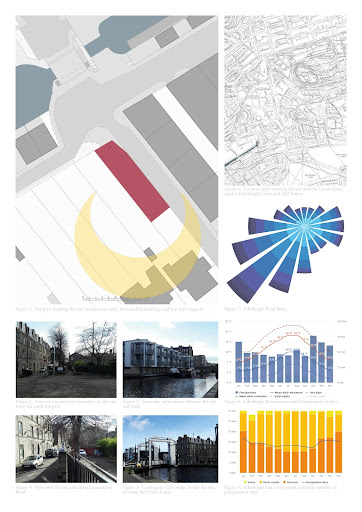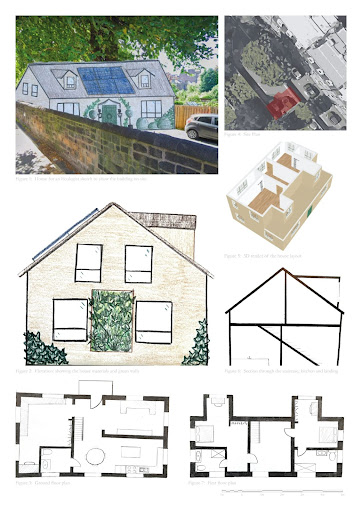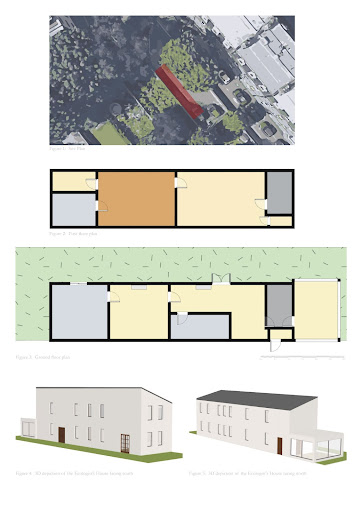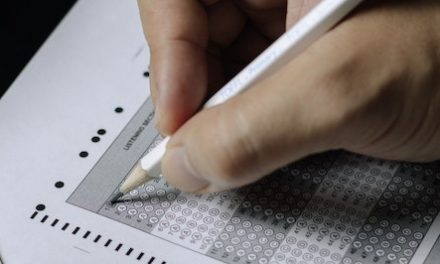Supervised by: Catherine Jones MA (Hons). Catherine studied her Part 1 Architecture degree at the University of Edinburgh and is now studying for her Part 2 Masters in Architecture. Her particular interests include sustainable building practices, theatre architecture and thinking about the changing role of the Architect.
Abstract
Rather than being a traditional academic paper, this work documents our explorations into architectural design articulated through our projects, research and drawings. This research was conducted using the site of the City of Edinburgh and culminated in individual building designs of a house with a specific client in mind. The paper’s framework centres on the process of design and decision-making in architecture, thus emulating architectural practice whilst recording our own personal reflections on the design process. Focusing on sustainability in architecture, the paper’s basis is on architecture’s relationship to the environment and what the role of the architect is becoming in the face of the climate crisis.
Introduction
Over the past four weeks, our project has given us the opportunity to focus on aspects of the site, the role of the client, the demands of architectural design and sustainable architecture. In the design of an eco-friendly ecologist’s house, a building which has particular needs of both home and office were considered, explored, and accommodated via architectural design, site analysis, and material studies, whilst maintaining our commitment to a framework of sustainability. The result of the paper is not just an ecologist’s house but a broader understanding of sustainability and carbon neutrality when designing buildings as well as developing our own design process and methods of communication.
The paper begins by discussing our clients and their needs, before moving on to site research. Following this discussion of the needs of the client and the practicalities of the building, the paper moves on to our designs, through both drawings and written explanations of the design. The paper concludes with a discussion about sustainability, addressing both the importance of sustainability in architecture more generally as well as how these measures have manifested themselves into our designs.
The Client
The designed home was intended for specific clients, consisting of a couple working in Edinburgh. The husband is a well-established ecologist with a degree from the University of Edinburgh who is currently working at The Royal Botanic Garden Edinburgh as a Botanist, and his wife is currently lecturing in Chemistry at the University of Edinburgh. The clients have a large dog and are considering having children in the future, and due to the proximity of their home to their jobs, the clients are not car owners. Lastly, the couple is adamant about continuing outdoor and ecological pursuits in their spare time and taking sustainable measures in the home is important to them.
As a result of the client’s familial needs, it is imperative that the home includes sufficient outdoor space for their dog and garden. Landscaping will provide privacy for the family, and large open spaces in the home provide flexibility for their current and future needs. In terms of the client’s environmental needs, the home will maximize outdoor space, utilize sustainable, renewable materials, and incorporate a greenhouse and allotment space.
Why the Client is Important
Considering the client and their needs necessarily shaped our designs right from the beginning of the project. Knowing who and what we are designing for influenced each design decision, from the building layout to material choices. Creating for our client simultaneously allowed us to realise the importance of knowledge of the client in relation to design whilst maintaining an authentic experience of the role of the architect.
The Site

Design
Edinburgh’s essence is simultaneously modern yet historic, capturing both moods with a combination of Georgian architecture paired with modern urban structures. The city has a historical feel which is not only publically symbolised via prominent buildings such as Edinburgh Castle but situated throughout the city with historic streets such as Grassmarket. Shopping areas continue to inhabit Georgian stone buildings and juxtapose the old with the new, creating a dualism of historicity and modernity existing simultaneously throughout all areas of the city. This is reflected in domestic neighbourhoods, many residential buildings are uniform in look, typically built from local sandstone, but personal styles are still expressed via front doors and outdoor spaces (1).
Climate
Edinburgh’s climate is temperate, with cool summers providing an average temperature of 11ºC – 19ºC (52ºF – 66ºF). Winters tend to be long, cold, and windy, with average lows of 1ºC (33.8ºF). Obvious sun is not to be expected, given cloudiness occurs more than 50% of the time, accompanied by high levels of humidity (typically ranging from 80-87% in autumn and winter) and averaging 1.6-3 inches of rainfall per month. Despite being cloudy most of the time, the average daily incident shortwave solar energy ranges between 0.4- 5.8 kWh. The shortest day of the year receives 6 hours and 58 minutes of daylight, and the longest day totals 17 hours and 37 minutes of daylight. Because Edinburgh is in the Northern Hemisphere, the sun’s rays hit from the south, which will be an important consideration in our design process. The wind speed ranges from 16.3 kph (10.1 mph) to 25.4 kph (15.8 mph) going from west to east the majority of the year, but also has periods of blowing from east to west (2).
Why the Site is Important
Accounting for the location and site shapes our designs in reference to both style and practicality. Rational designs consider their location to produce the strongest practical and aesthetic outcome, albeit that latter is to some degree subjective. Whilst we began from a strong vernacular material palette and building mass, the diversity of architecture across the area gave us scope to be creative in our choices. Edinburgh’s dull climate and low temperatures brought about design challenges that had to be managed throughout the design process, but also gave us opportunities to learn about how to design for different climates.
Overall, the experience of designing for a site has mirrored the role of the architect in a way that improves our skillset and has given us a taste of what it is like to study and work in the architectural field.
Our Designs
Having conceived our client, it then became a matter of designing a house to suit their daily life and priorities. Designing from scratch, both of our homes use inspiration from the surrounding area and precedent studies to create bespoke designs to fit both the site and the client. From considering materials to layout to outdoor space and how the house will be used, both of our designs use the site in intelligent ways to maximize the use of space and natural light. In order to showcase our designs, we worked hard to create a variety of drawings that show various design choices. These visualize the buildings in different ways and also allowed us to learn and improve our drawing methods.
Karina

The building mass and layout mirror a traditional style home that is influenced by the surrounding Georgian houses in the area. Featuring all the necessary spaces for the ecologist and his wife, the layout of the house is open, allowing natural light to flood large spaces and create a warm, modern home. Furthermore, the house is designed with local, vernacular materials that allow the building to fit with the site and maintain the classic Georgian architecture that is found in Edinburgh. The external walls, built with Sandstone, as well as being vernacular, also contribute to the sustainable measures incorporated into the design.
To meet the needs of the ecologist, the outdoor space across the site allows for a greenhouse, space for a private allotment, a dog-friendly area, and a space for entertaining guests. While contributing to the aesthetic of the home, ecological elements are found all around the site. The property is lined by trees to provide privacy for the client but also feeds into both sustainability measures and the interests of the client. The lack of a driveway allows for more green space on the site, and considering the proximity of the site to Edinburgh city centre, the couple will be able to use bicycles without contributing to climate issues.
Sophia

The design features aesthetic and technical arrangements that integrate the home into both the traditional and modern features of Edinburgh whilst maintaining our commitment to sustainability. The north-west side of the home matches the modern apartments near the site that line the Union Canal, whilst the other sides are designed to meet the more vernacular Georgian neighbourhood. The pitched roof provides an efficient angle for solar panels, and space for a wind turbine is allocated, creating a dual clean energy creation component to our design. Furthermore, the greenhouse provides opportunities to grow fresh produce and is equipped for rainwater collection via a drip irrigation system, minimizing the use of water. The creation of a technology room at the back of the house provides the opportunity for control of both of these features and potential improvements in the future if the family wish to do so. Sustainability has also been at the heart of our design features for the family’s comfort with the creation of a sustainable modern gazebo overlooking the river, accompanied by a large yard for the dog and any future family.
The design has also incorporated features for the family’s comfort and pleasure. The ground floor provides an entertainment area, a dining area, and a kitchen overlooking the expansive yard, whilst the first floor is an oasis of relaxation with a living room and master suite. The outdoors and indoors have an intertwined relationship throughout the house, with a stairwell directly off the entrance providing access to the greenhouse as well as to the first floor, providing an interconnection between the outdoors and indoors.
Sustainability
Why do we build sustainably?
Designing and constructing buildings creates significant usage of fossil fuels. Construction accounts for 36% of worldwide energy usage as well as 40% of carbon dioxide emissions. As well as high levels of fossil fuels, buildings and their creation use substantial amounts of natural resources, for instance, in the United States buildings account for 68% of total electricity consumption and 12% of water consumption (3). Thus, architects and architecture have a significant opportunity in our desire to create a more sustainable world.
Producing large amounts of carbon dioxide and using large amounts of resources is not inevitable. Our use of both non-local and environmentally unfriendly materials such as concrete creates an unnecessary and avoidable climate effect in architecture. In addition to this, our creation of hazardous waste and improper disposal of said waste can affect the environment where building takes place; by keeping such methods and materials to a minimum, this impact can be mitigated. Considerations of materials are becoming more open, particularly when it comes to material choice and the way these are manufactured; continuously, new materials are coming onto the market with sustainability as their key selling point.
By using sustainable methods and materials, architects and their buildings can produce environmental, economic, and social benefits. The environmental benefits include increased biodiversity, improved water and air quality and conserving natural resources. Sustainability is increasingly attractive to consumers not just for its environmental benefits but for its cheaper outlay costs, increased efficiency, enhanced asset value and optimising life cycles. The inevitable result of these benefits is enhanced comfort, improved air quality, reduction in energy costs and minimal strain on local infrastructure.
Sustainability measures
In order to encompass a full range of sustainability into the home’s design, many effective resources were used in order to provide the home with a sufficient way to generate renewable energy. Edinburgh more than meets the minimum requirements for both sun and wind to generate sufficient electricity, making both a useful addition to the design. These measures of creating energy were supplemented with a clean energy air-source heat pump to heat the home. Due to Edinburgh’s climate, a heating system is necessary and heat pumps are an efficient alternative (providing up to three times more heat energy than the electricity it consumes) to traditional heating systems such as gas. Finally, to minimize water consumption, the drip irrigation system we designed takes advantage of Edinburgh’s monthly rainfall of 1.6 to 3 inches to provide water for the greenhouse (4).
Our Materials
One of the focal points of our designs has been to explore new and sustainable building materials that could be incorporated into the Edinburgh vernacular architecture. Remaining sensitive to the Georgian sandstone that is the mainstay of Edinburgh’s architecture, each of our designs sees a modern twist to the design of the Edinburgh house and considers other sustainable materials to incorporate into that.
Karina
Cork flooring is used throughout the home as a more sustainable alternative to plastic vinyl or carpet. Illuminating the home are LED lights, using up to seventy-five per cent less energy than the standard light bulb, both using less energy and also reducing household costs (5). Lastly, solar panels on the roof are used to power the home; when excess energy is collected, the energy can be efficiently utilized to provide power to other homes in the neighbourhood or be sold back to the National Grid.
The roof is covered with weathered wooden tiling, taking advantage of a readily available, sustainable resource available in the local area. Additionally, the triple-glazed windows on each side of the house are installed, limiting the usage of fossil fuels insulating the house in the winter whilst reducing energy usage and costs. Externally, living walls cover the home reducing the project’s carbon footprint as well as adding further insulation to the house itself. These vertical gardens add to the green space of the relatively small site and give more opportunity for foliage and outdoor aesthetics. Each material has been chosen to be as sustainable as possible whilst using, where possible, local resources, reducing the cost and fuel needed to transport the materials to the site.
Sophia
New materials have been used across the interior and garden areas of the site to encourage sustainability and explore materials outside the traditional. Cork flooring is used alongside clay bricks to create a modern interior that uses renewable and natural materials as much as possible. As an alternative to fossil fuel-intensive concrete, Ferrock uses up to ninety-five per cent recycled materials and is carbon negative in its manufacturing and use. Although it is a new material, Ferrock has shown to be up to five times stronger than normal concrete and can be used in this scale of the project (6). Other smaller areas of the project include new materials such as newspaperwood, recycled plastic and plant-based insulation that all prove to be much more sustainable than traditional building materials, but can only be used for limited uses at the moment, such as decoration or furniture.
Conclusion
Experiencing research and design has produced both successes and limitations in our work. By utilising a variety of resources, our conceptions of ‘good design’ changed from merely what we desired to encompass the client’s, the site’s and the environment’s needs. The result was a design combining our own wants as well as others’ needs. During this process, we have adopted skills in our architectural drawing and increased experience in new software. Over time our designs have improved, allowing us to realize and express our vision on paper.
We have learned about the architect’s significant role in tackling climate change and the importance of making use of new technologies in their designs to maximize sustainability. In future, we shall continue learning about sustainable materials, expanding our knowledge about their variety and use, allowing us to continue to create unique ideas and designs. By further pursuing this line of enquiry, we shall improve our understanding as well as the designs of future projects. We hope our paper gives an insight into how the architect can pursue ecological solutions without needing to sacrifice aesthetics, comfort, or durability.
Bibliography & Further Reading
- Historic Scotland, ‘The Royal Mile’, Edinburgh World Heritage, 24 November 2017, https://ewh.org.uk/world-heritage-sites/the-royal-mile/; Mike MacEacheran, ‘Exploring Edinburgh’s Classic Architecture and Contemporary Design’, Lonely Planet (blog), 16 March 2022, https://www.lonelyplanet.com/articles/architecture-and-contemporary-design-in-edinburgh; Panorama Streetline, ‘Edinburgh Architecture | The Scottish capital in streetscape panoramas’, PANORAMA STREETLINE (blog), 2022, https://panoramastreetline.com/news/edinburgh-architecture-in-streetscape-panoramas.
- Anon, ‘Climate Edinburgh’, meteoblue, accessed 2 October 2021, https://www.meteoblue.com/en/weather/historyclimate/climatemodelled/edinburgh_united-kingdom_2650225; World Weather Online, ‘Edinburgh Climate Weather Averages’, World Weather Online, 2022, https://www.worldweatheronline.com/edinburgh-weather/city-of-edinburgh/gb.aspx.
- Greenbuilt Alliance, ‘Importance of Green Building’, Green Built Alliance, 2022, https://www.greenbuilt.org/about/importance-of-green-building/.
- Anon, ‘Climate Edinburgh’; Energy Saver, ‘Air-Source Heat Pumps | Department of Energy’, Energy.gov, 2022, https://www.energy.gov/energysaver/air-source-heat-pumps.
- Energy Saver, ‘LED Lighting’, Energy.gov, 2022, https://www.energy.gov/energysaver/led-lighting.
- ‘Advantages and Disadvantages of Ferrock for Building’, Martin Perry Associates, 7 June 2021, https://mperryassociates.com/blog/ferrock-for-building/.
Attainable Home. ‘Are Small Wind Turbines Worth It? (Pros and Cons)’, 1 December 2021. https://www.attainablehome.com/are-small-wind-turbines-worth-it/.
Barbulianno. ‘18 Eco-Friendly Building Materials That Help You Save Energy And The Earth’. Barbulianno Design, 16 October 2020. https://www.barbuliannodesign.com/post/eco-friendly-building-materials-list.
British Assessment Bureau. ‘What Is Sustainable Construction and Why Is It Important?’ British Assessment Bureau, 2 February 2019. https://www.british-assessment.co.uk/insights/what-is-sustainable-construction-and-why-is-it-important/.
Empower Solar. ‘Tesla Solar Battery Backup for Home & Business’. EmPower Solar, 2022. https://www.empower-solar.com/backup-power-solutions/.
Energy Saver. ‘Air-Source Heat Pumps | Department of Energy’. Energy.gov, 2022. https://www.energy.gov/energysaver/air-source-heat-pumps. ‘LED Lighting’. Energy.gov, 2022. https://www.energy.gov/energysaver/led-lighting.
Greenbuilt Alliance. ‘Importance of Green Building’. Green Built Alliance, 2022.
https://www.greenbuilt.org/about/importance-of-green-building/.
Historic Scotland. ‘The Royal Mile’. Edinburgh World Heritage, 24 November 2017. https://ewh.org.uk/world-heritage-sites/the-royal-mile/.
Hueston, Marie Proeller, and Bob Vila. ‘Is Cork Flooring Right for You?’ Bob Vila (blog), 25 January 2021. https://www.bobvila.com/articles/pros-and-cons-of-cork-flooring/.
MacEacheran, Mike. ‘Exploring Edinburgh’s Classic Architecture and Contemporary Design’. Lonely Planet (blog), 16 March 2022. https://www.lonelyplanet.com/articles/architecture-and-contemporary-design-in-edinburgh.
Mark Perry Associates. ‘Advantages and Disadvantages of Ferrock in Building’. Martin Perry Associates, 7 June 2021. https://mperryassociates.com/blog/ferrock-for-building/.
Panorama Streetline. ‘Edinburgh Architecture | The scottish capital in streetscape panoramas’. PANORAMA STREETLINE (blog), 2022. https://panoramastreetline.com/news/edinburgh-architecture-in-streetscape-panoramas.
Weather Spark. ‘Edinburgh Winter Weather’. Weather Spark, 2022. https://weatherspark.com/s/38026/3/Average-Winter-Weather-in-Edinburgh-United-Kingdom#Figures-SolarEnergy.
World Weather Online. ‘Edinburgh Climate Weather Averages’. World Weather Online, 2022. https://www.worldweatheronline.com/edinburgh-weather/city-of-edinburgh/gb.aspx.




